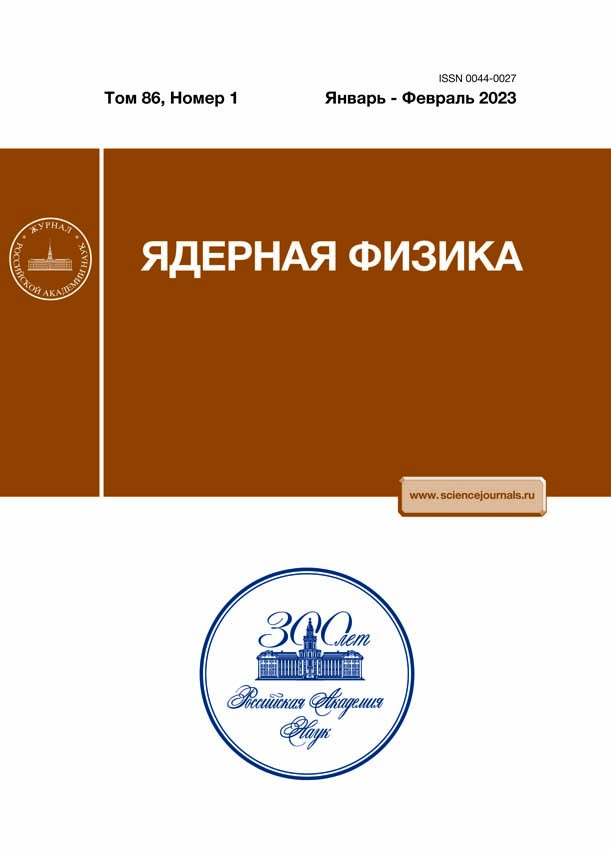Quark–Gluon String Model and Its Application to Inelastic C Interactions at a Momentum of 4.2 GeV/ per Nucleon
- 作者: Bekmirzaev R.N.1, Sultanov M.U.2, Yuldashev S.K.3
-
隶属关系:
- Jizzakh State Pedagogical University
- State Architecture and Civil Engineering Institute
- Samarkand State University
- 期: 卷 86, 编号 1 (2023)
- 页面: 234-239
- 栏目: МАТЕРИАЛЫ LXXII МЕЖДУНАРОДНОЙ КОНФЕРЕНЦИИ “ЯДРО-2022: ФУНДАМЕНТАЛЬНЫЕ ВОПРОСЫ И ПРИЛОЖЕНИЯ”. Элементарные частицы и поля. Эксперимент
- ##submission.datePublished##: 01.03.2023
- URL: https://cardiosomatics.ru/0044-0027/article/view/674767
- DOI: https://doi.org/10.31857/S0044002723010105
- EDN: https://elibrary.ru/RAJBWU
- ID: 674767
如何引用文章
详细
The fundamentals of the quark–gluon string (QGS) model for describing inelastic interactions of light nuclei at high energies are outlined. Basic ideas of the QGS model, which include the formation of quark–gluon strings, the choice of their limited number, and a simulation of breaking of a string with hadron formation, are presented. The results of theoretical calculations based on the QGS model are compared with experimental data obtained for inelastic dC interactions. A brief account of the procedure for obtaining these experimental data is given. An analysis and a comparison of model results and experimental information shows that the QGS model reproduces faithfully the interactions of colliding light nuclei at momenta around 4.2 GeV/c and is applicable up to nuclear-interaction energies corresponding to 10 GeV per nucleon.
作者简介
R. Bekmirzaev
Jizzakh State Pedagogical University
Email: bekmirzaev@mail.ru
130100, Jizzakh, Uzbekistan
M. Sultanov
State Architecture and Civil Engineering Institute
Email: bekmirzaev@mail.ru
Samarkand, Uzbekistan
S. Yuldashev
Samarkand State University
编辑信件的主要联系方式.
Email: bekmirzaev@mail.ru
Samarkand, Uzbekistan
参考
- Н. С. Амелин, Л. В. Бравина, ЯФ 51, 211 (1990).
- С. Н. Ермаков, Г. А. Михайлов, Курс статистического моделирования (Наука, Москва, 1976).
- H.-U. Bengtsson and G. Ingelman, Comput. Phys. Commun. 34, 251 (1985).
- R. P. Feynman and R. D. Field, Nucl. Phys. B 136, 1 (1978).
- Н. С. Амелин, В. С. Барашенков, Н. В. Славин, ЯФ 40, 1650 (1984).
- М. У. Султанов, А. А. Усаров, У. У. Тухтаев, А. А. Кодиров, К. Х. Яхшибоев, Л. Т. Нурмуродов, Науч. вестн. СамГУ, № 1(119), 112 (2020).
- L. Simiĉ, J. Backoviĉ, H. N. Agakishiyev, E. N. Kladnitskaya, and A. P. Cheplakov, Z. Phys. C 48, 577 (1990).
- M. U. Sultanov, F. Daminov, S. S. Aliqulov, R. N. Bekmirzaev, X. Bekmirzayeva, and Sh. Xolbutayev, in Proceedings of the International Conference on Nuclear Science and Its Application, Samarkand, Uzbekistan, Sept. 25–28, 2012, p. 131.
补充文件









